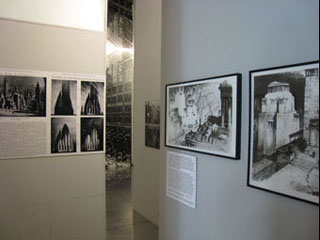The Skyscraper Museum is devoted to the study of high-rise building, past, present, and future. The Museum explores tall buildings as objects of design, products of technology, sites of construction, investments in real estate, and places of work and residence. This site will look better in a browser that supports web standards, but it is accessible to any browser or Internet device.

Hugh Ferriss

Ferriss was less attracted to famous monuments like the Parthenon or Chartres than to vast architectural tableaux of the ancient civilizations of the Near East, Indochina, or Imperial Rome. A fascination with Babylon and other fallen civilizations was a popular theme among artists and writers in the early twentieth century, and the Tower of Babel was a common trope for setback skyscrapers, which were often referred to as modern ziggurats in the "New Babylon of New York."
In these pen-and-ink drawings of 1922 and 1924, which are much closer to his earlier graphic style than to the dark charcoal renderings of the later twenties, Ferriss evokes a new cityscape of setback towers topped by expansive terraces, roof gardens, and a new urban elite who live in the sky.